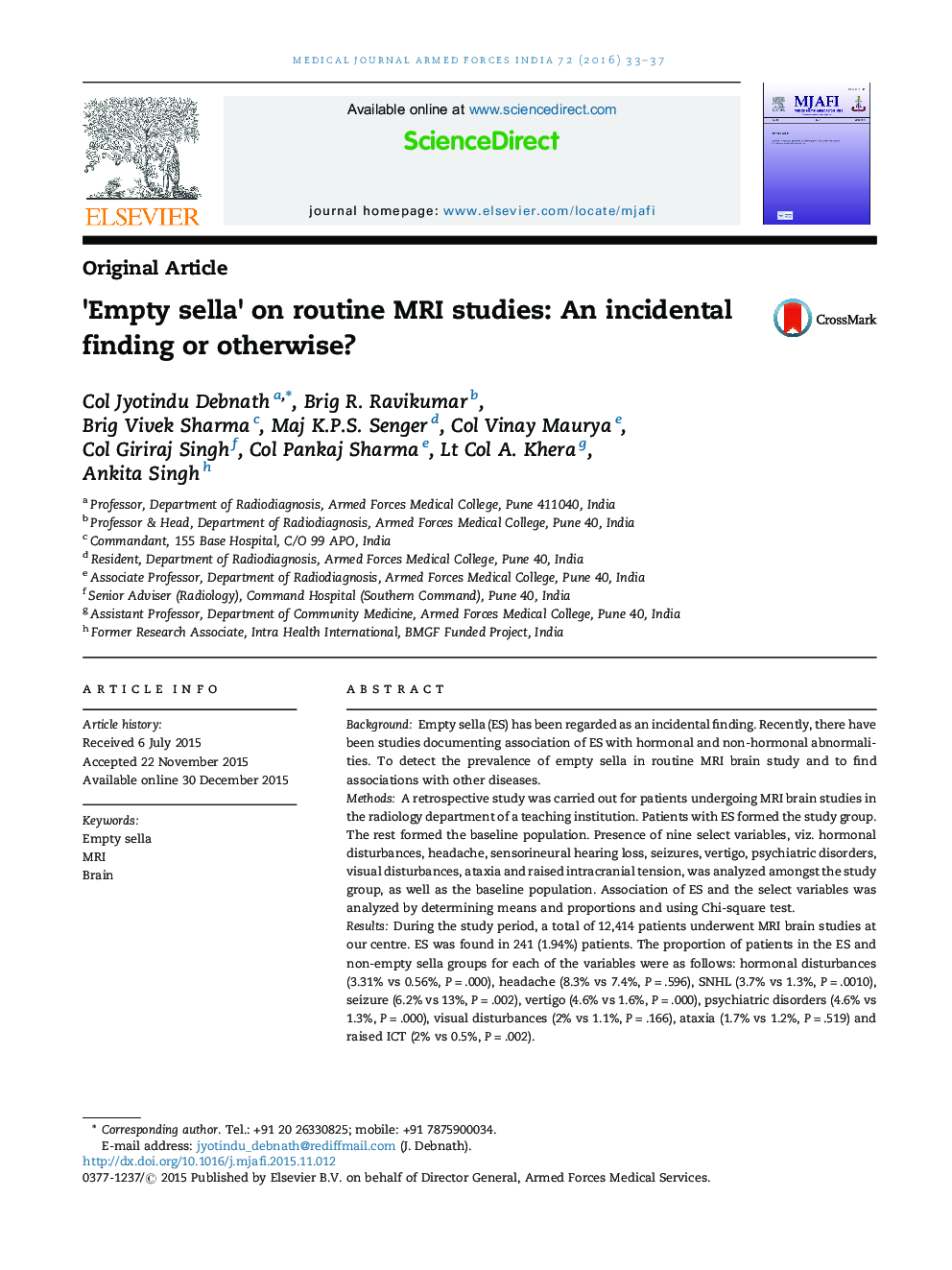| Article ID | Journal | Published Year | Pages | File Type |
|---|---|---|---|---|
| 3160878 | Medical Journal Armed Forces India | 2016 | 5 Pages |
BackgroundEmpty sella (ES) has been regarded as an incidental finding. Recently, there have been studies documenting association of ES with hormonal and non-hormonal abnormalities. To detect the prevalence of empty sella in routine MRI brain study and to find associations with other diseases.MethodsA retrospective study was carried out for patients undergoing MRI brain studies in the radiology department of a teaching institution. Patients with ES formed the study group. The rest formed the baseline population. Presence of nine select variables, viz. hormonal disturbances, headache, sensorineural hearing loss, seizures, vertigo, psychiatric disorders, visual disturbances, ataxia and raised intracranial tension, was analyzed amongst the study group, as well as the baseline population. Association of ES and the select variables was analyzed by determining means and proportions and using Chi-square test.ResultsDuring the study period, a total of 12,414 patients underwent MRI brain studies at our centre. ES was found in 241 (1.94%) patients. The proportion of patients in the ES and non-empty sella groups for each of the variables were as follows: hormonal disturbances (3.31% vs 0.56%, P = .000), headache (8.3% vs 7.4%, P = .596), SNHL (3.7% vs 1.3%, P = .0010), seizure (6.2% vs 13%, P = .002), vertigo (4.6% vs 1.6%, P = .000), psychiatric disorders (4.6% vs 1.3%, P = .000), visual disturbances (2% vs 1.1%, P = .166), ataxia (1.7% vs 1.2%, P = .519) and raised ICT (2% vs 0.5%, P = .002).ConclusionHormonal disturbances, psychiatric disorders, raised ICT and SNHL have been found to be more often associated with ES as compared to general population.
